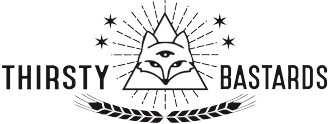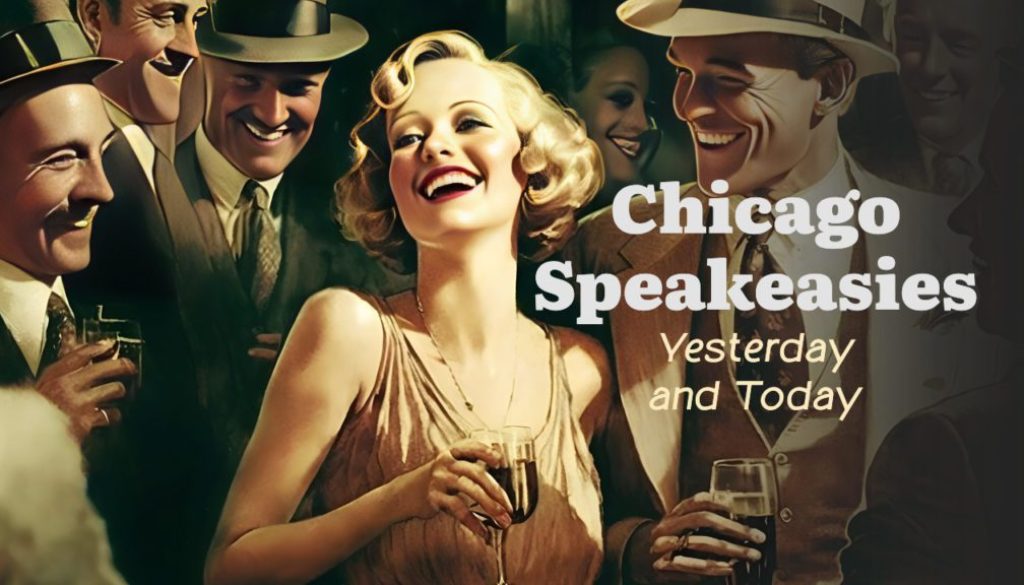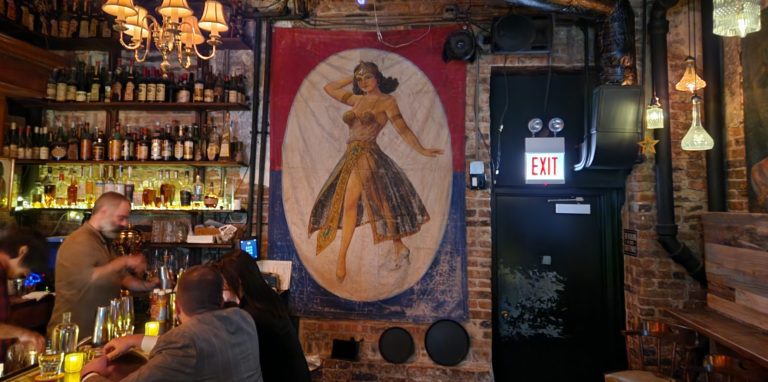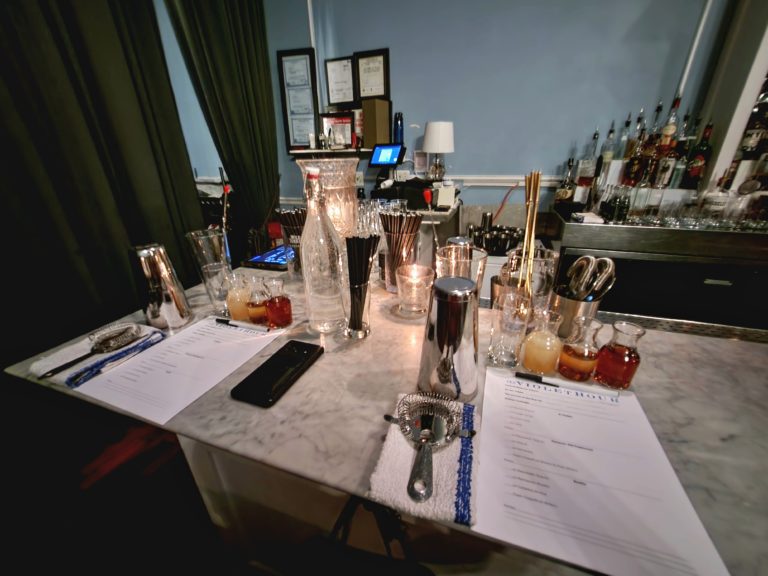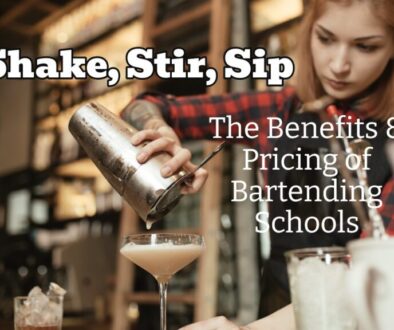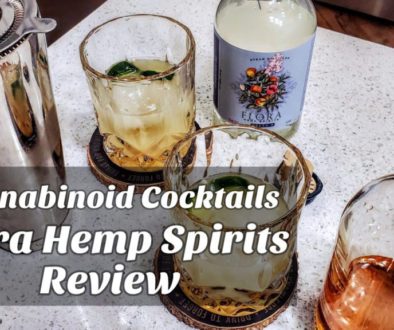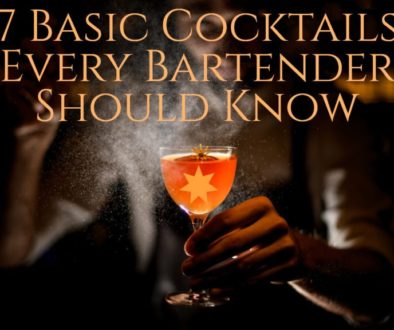Today we’re looking at the fascinating history of speakeasies in Chicago. From their origins to their evolution, we’ll explore how these underground bars and clubs shaped this city’s culture. We’ll also list some local establishments that are keeping the speakeasy vibe alive where you can experience your own forbidden drinking. So, grab a bathtub GnT, memorize the password, and join us on our drinking journey through time!
Contents
The Ban on Booze
From 1920 to 1933, the United States was a wild and wacky place – and not just because of the flappers! No, it was because of something even crazier: Prohibition. Yes, that’s right – the government had actually decided to make it illegal to produce, import, transport, and – most importantly – consume alcohol. While this had the potential to be a real downer, it didn’t get in the way of people’s good times. In fact, with bootleggers and speakeasies popping up all over the place, it made things even more exciting, albeit dangerous. If you wanted to have a drink in the Roaring Twenties, you had to be creative – and Prohibition made sure of that!
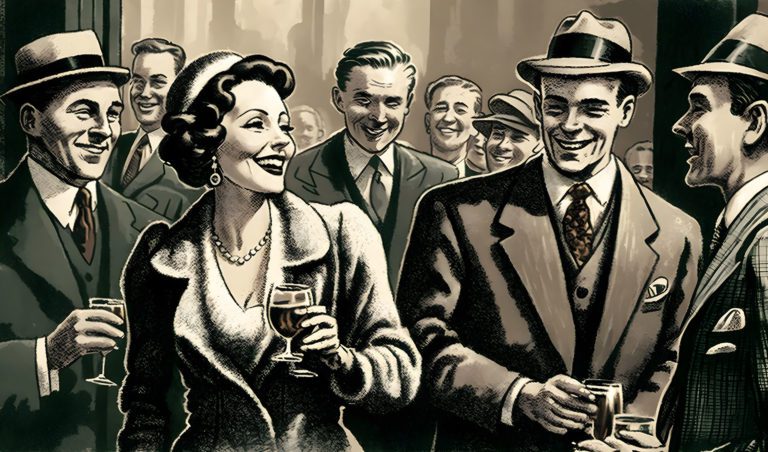
While the Prohibition era is often spoken about as a time of alcohol-fueled debauchery, the reality was that it was often a time of violence, fear, and danger. Because alcohol was illegal, it made it much harder to regulate and as a result, it became a hot commodity. This led to it being openly traded on the black market and often mixed with dangerous ingredients.
Enter the speakeasy: a secret, underground bar that sold and served alcohol illegally. The term ‘Speakeasy’ started during prohibition when bartenders would tell customers to order alcohol quietly, or “speak easy”, so as not to bring attention to the illegal act. These hidden establishments became increasingly popular during this time, as they allowed patrons to consume alcohol without fear of being caught by the police.
- A brilliant, authoritative, and fascinating history of America’s most puzzling era, the years 1920 to 1933, when the US Constitution was amended to restrict one of America’s favorite pastimes: drinking alcoholic beverages.
Prices pulled from the Amazon Product Advertising API on:
Product prices and availability are accurate as of the date/time indicated and are subject to change. Any price and availability information displayed on [relevant Amazon Site(s), as applicable] at the time of purchase will apply to the purchase of this product.
Speakeasies were often hidden in backrooms, alleyways, or basements and served drinks without a license. Some bars even boarded up their windows to hide their activities. They were known for their unique atmosphere and secretive nature, as well as their inventive cocktails. Speakeasies were also popular for their live music, dancing, and gambling. Many of these establishments also served food, making them a popular and desirable destination for those looking for an exciting night out.
It was not uncommon for police raids to happen in the middle of the night, with the police bursting through doors, interrupting parties and arresting patrons and staff. Bootleggers often had to be crafty to avoid getting caught by the police, often hiding the alcohol in secret compartments, or disguising it as something else. Despite all these measures, police raids were still frequent, and many Chicago speakeasies were shut down as a result.
The Prohibition Era in Chicago
In Chicago during Prohibition, crime was rampant, and bootlegging was on the rise! Bootleggers made huge profits from smuggling alcohol into the country and selling it to Chicago speakeasies. This was a dangerous occupation, however, as they often had to dodge the police and rival gangs. Bootleggers often used hidden compartments in boats and cars to move booze around, leading to the development of new technologies for these vehicles.
Organized crime gangs became involved in the smuggling and distribution of liquor, and they soon began to muscle in on other illegal activities, such as gambling and prostitution. The most famous mobster of the Prohibition era was Al Capone, who controlled the illegal alcohol trade in Chicago.
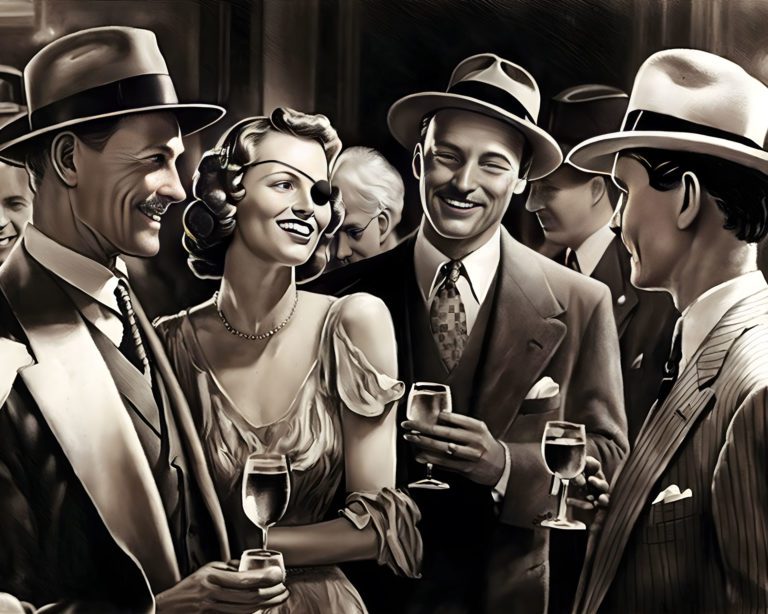
Evidence of bootlegging tunnels is crisscrossed across different Chicago neighborhoods, with one famous network in what is now known as the “Al Capone Tunnel”. Public corruption associated with bootlegging was also widespread, with the owners of one Chicago brewery including a few aldermen among their ranks. Prohibition certainly didn’t stop Americans from drinking, but it did lead to a period of gang warfare with some grave consequences. Ah, the good old days!
In the 1920s during the height of Prohibition, Al Capone’s multi-million-dollar Chicago bootlegging operation was a force to be reckoned with. He and his gang of mobsters had a network of tunnels criss-crossing the city, which were rumored to be used for smuggling illegal alcohol to a speakeasy bar connected to Capone.
Johnny Torrio, another notorious Chicago mobster, kept the peace between Capone’s Italian-run bootlegging operation and the Irish and Polish gangs in the city’s South Side. The competition for control of the illegal alcohol market was intense and often violent, as evidenced by the infamous Saint Valentine’s Day Massacre in 1929.
Despite the dangers, bootleggers such as Giuseppe “Joe” Esposito prospered, growing from a Black Hand extortionist and bootlegger in Little Italy to the elected Republican head of the 19th Ward.
- Kind of like museums, but you can drink there!
Prices pulled from the Amazon Product Advertising API on:
Product prices and availability are accurate as of the date/time indicated and are subject to change. Any price and availability information displayed on [relevant Amazon Site(s), as applicable] at the time of purchase will apply to the purchase of this product.
Secret Passwords and Hidden Doors
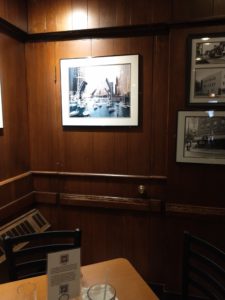
Speakeasies were not easy to find and often had secretive passwords and hidden doors to gain entry. Some Chicago speakeasies would require customers to whisper their orders to bartenders, while others used secret code words to help guests identify themselves. Some speakeasies went a step further and required customers to knock a certain number of times on the door before being buzzed in. Customers were often required to give a secret password in exchange for a drink, or even a secret handshake to gain entry. In some cases, speakeasy patrons were even given special tokens or coins that allowed them access into the establishment.
Many Chicago speakeasies even had secret passageways, trap doors, and hidden back rooms to make sure authorities did not catch them. Some would require a secret password to enter, others would have a doorman who would check for the right type of clothing or a hidden symbol. Doors were often painted green to indicate that sweet illicit booze could be found behind.
The Legacy of the Speakeasy in Chicago
Even though Prohibition ended in 1933, the fascination with hidden hooch persists. Many of the city’s bars still maintain an air of speakeasy secrecy, whether they are tucked away in alleyways or basements or behind secret doors.
There are still some secret passwords and hidden entrances to be found, as well as a wide selection of beverages ranging from craft beers to specialty cocktails. The Green Door Tavern, for example, has been around since the Prohibition era and still features some of the original elements from that time period. Modern-day Chicago speakeasies also offer a variety of entertainment options, from live music to trivia nights.
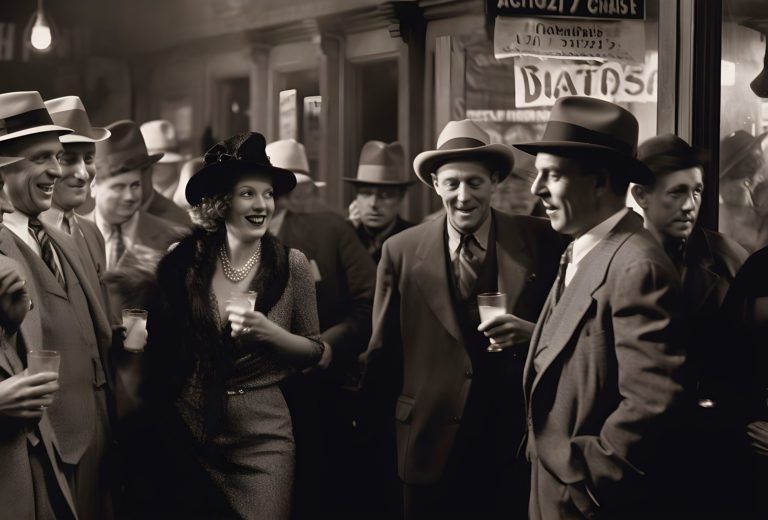
If you visit Simon’s in Andersonville, you can see a remnant of the speakeasy basement door labeled “N. N. CLUB – MEMBERS ONLY”. That’s the “No Name Club”, but we didn’t tell you that.
If you pop into the medieval-looking corner establishment at Clark and Wellington, you can buy all the booze you can afford today. It’s a Binny’s Beverage Depot. During Prohibition, it was The Ivanhoe Restaurant and its basement hid a speakeasy space known as The Catacombs – a favorite of Al Capone’s. Binny’s holds wine tastings in this space today.
Chicago Speakeasies You Can Visit Today…
…IF you know the password.
Yes, there are several places in our fine city where one can still get a taste of shameful, hidden drinking. May establishments are keeping the spirit of hidden spirits alive!
Max Mihro from Chicagospeakeasies.com
Max Mihro is the curator of chicagospeakeasies.com, a frequently updated website dedicated to speaking out about speakeasies in our fine city. Let’s hear about this bar hunter’s recommended spots and favorite hidey holes.
Thirsty Bastards: What about Chicago speakeasies inspired you to create a website dedicated to them
Max Mihro: After a friend of mine introduced me to the speakeasy scene here, I got a little obsessed, but after a bit of googling, I was only able to find clickbaity articles that listed the top 8 or so in the city. I knew there had to be more than that, in the city known for its prohibition culture, so I dug deep. I hunted forums, maps, everything – and after a little effort I was able to find nearly 60 in the city. I figured there must be other people like me that greatly enjoy the secretive, hidden vibe a speakeasy gives, so I thought I should make a resource for those people.
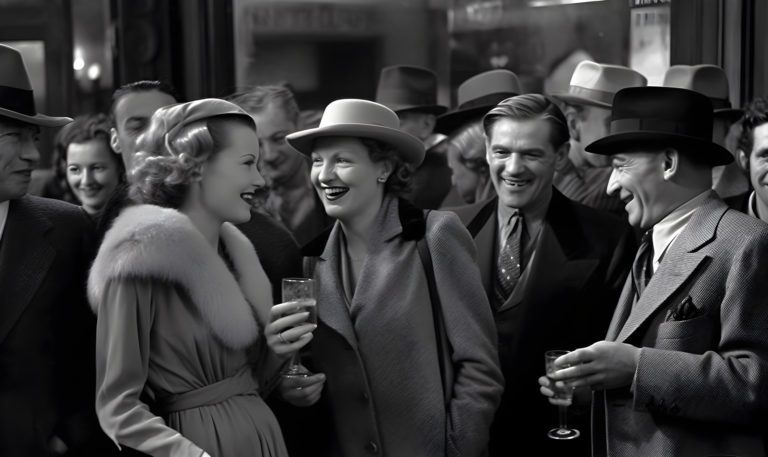
TB: Why do you think that the speakeasy is an enduring part of Chicago booze history?
MM: Chicago specifically was known as THE site of prohibition drinking culture, so I would guess that over a few generations the “secret cool kid club” vibe you get from knowing about speakeasies stuck around. In my mind, that’s why there’s such a demand for it specifically here.
TB: What is your favorite Chicago speakeasy? Which is the most authentic in your opinion?
MM: My personal favorite is the Untitled Supper Club. It’s massive, super upscale, and just generally gorgeous. It’s not as hidden as others, but it’s my dream to host a big speakeasy party down there. They’re also open more than most other spots, so I’ll roll in on a Wednesday sometimes.
The most authentic I’ve found so far is The Drifter. It’s 20’s prohibition themed, super tiny, incredibly well done, and pretty well hidden under an existing bar. It’s not exactly a secret though – you have to get there very early if you want a chance at a seat – otherwise there’s a line out the door.
- From dancing at Hanleys House of Happiness to raising pints at Kellys Pub on St. Patricks Day, the history of the Irish community in Chicago is told through stories of its gathering places. Based on interviews with tavern owners, musicians, bartenders, and scholars.
Prices pulled from the Amazon Product Advertising API on:
Product prices and availability are accurate as of the date/time indicated and are subject to change. Any price and availability information displayed on [relevant Amazon Site(s), as applicable] at the time of purchase will apply to the purchase of this product.
TB: Which Chicago speakeasy is the hardest to get into? Have you ever been denied entry into a speakeasy?
MM: The Office is the hardest. I’ve heard rumors that there are spots around town that require a secret password, memberships, and more to get into though – but I’m still trying to find those. 😉
Not yet, but only because I make sure to get to all of them as early as I can! A lot of them may be hidden but most are small – and if you don’t time it right, they fill up immediately and you won’t get a seat. A number of them have dress codes as well, so try to avoid baseball caps and short sleeves, or you might be out of luck.
TB: What is your favorite prohibition-era drink and where can it be found?
MM: I can’t pick one, but The Drifter’s entire drink menu is on a small deck of custom tarot cards, and they’re all incredible. My favorite drink I’ve tried so far, though it’s not prohibition themed, is the Raspberry Blush at the Untitled Supper Club. It’s very fruity, but incredibly delicious.
The Drifter
My partner took me to The Drifter for my birthday this year. This is the speakeasy-style lounge hidden in the basement of Green Door Tavern at 678 N. Orleans St. The entrance door is secreted behind an unassuming tchotchke shelf.
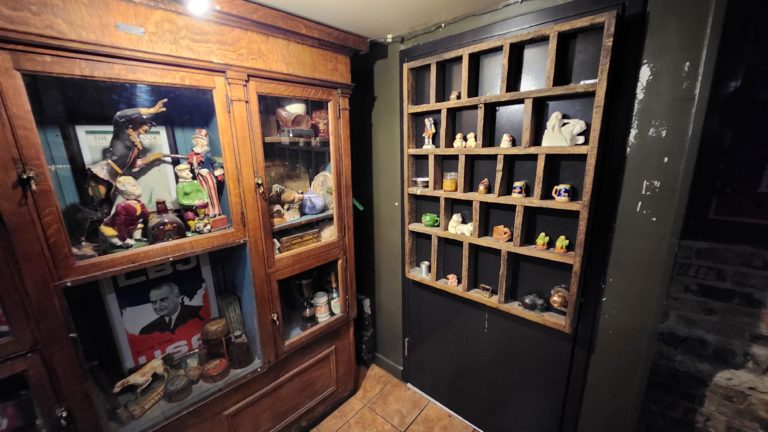
Inside is this small space, adorned with era-appropriate art and artifacts, is a medium-sized bar and several small tables. At the end opposite the door is a small stage where, on the hour, all manner of burlesque and underground performers light up the room. A host will seat you and there is a 90-minute seating maximum.
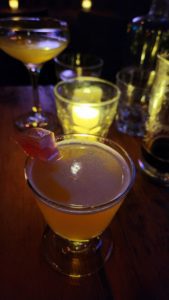
The Drifter’s specialty cocktail menu is printed on tarot cards. I recommend the Malort-heavy “Essential Monsters” for that local flavor that Chicago calls its own.
We caught the tail-end of a solo songstress performing jazz-era favorites. An hour later, a hoop busker did a 10-minute performance. In between live shows, silent vintage burlesque films are projected onto a screen.
We went to The Drifter on a weeknight and right when it opened, so tables were half occupied and there were seats at the bar. By the time we left, it had filled up completely. Plan accordingly.
Read Max’s Review of The Drifter
The Violet Hour
In addition to being one of the coolest “hidden door” Chicago speakeasies, The Violet Hour hosts mixology classes. I treated my partner to a Tequila and Mezcal cocktail mixing class and it was classy AF!
Not only was it incredibly informative, but you also simply cannot beat the charm and style of this hidden-in-plain-sight establishment. Finally, I can shake without tiny ice shards and my hand stirring game is spot on.
Read Max’s Review of The Violet Hour
Well, that ought to be enough to get you out there, knocking on random knobless doors around this great city, hoping to be let into some hush-hush tipple dungeon. The next time you are planning a night out, hit up chicagospeakeasies.com for your next after-dinner cocktail destination.
Don’t forget, if the cops come crashing into the room while you’re sitting and sipping your bathtub Gin Rickey, booze is still legal. For now.
References
History of the 1920s Speakeasies
The Secret Science Behind Prohibition
